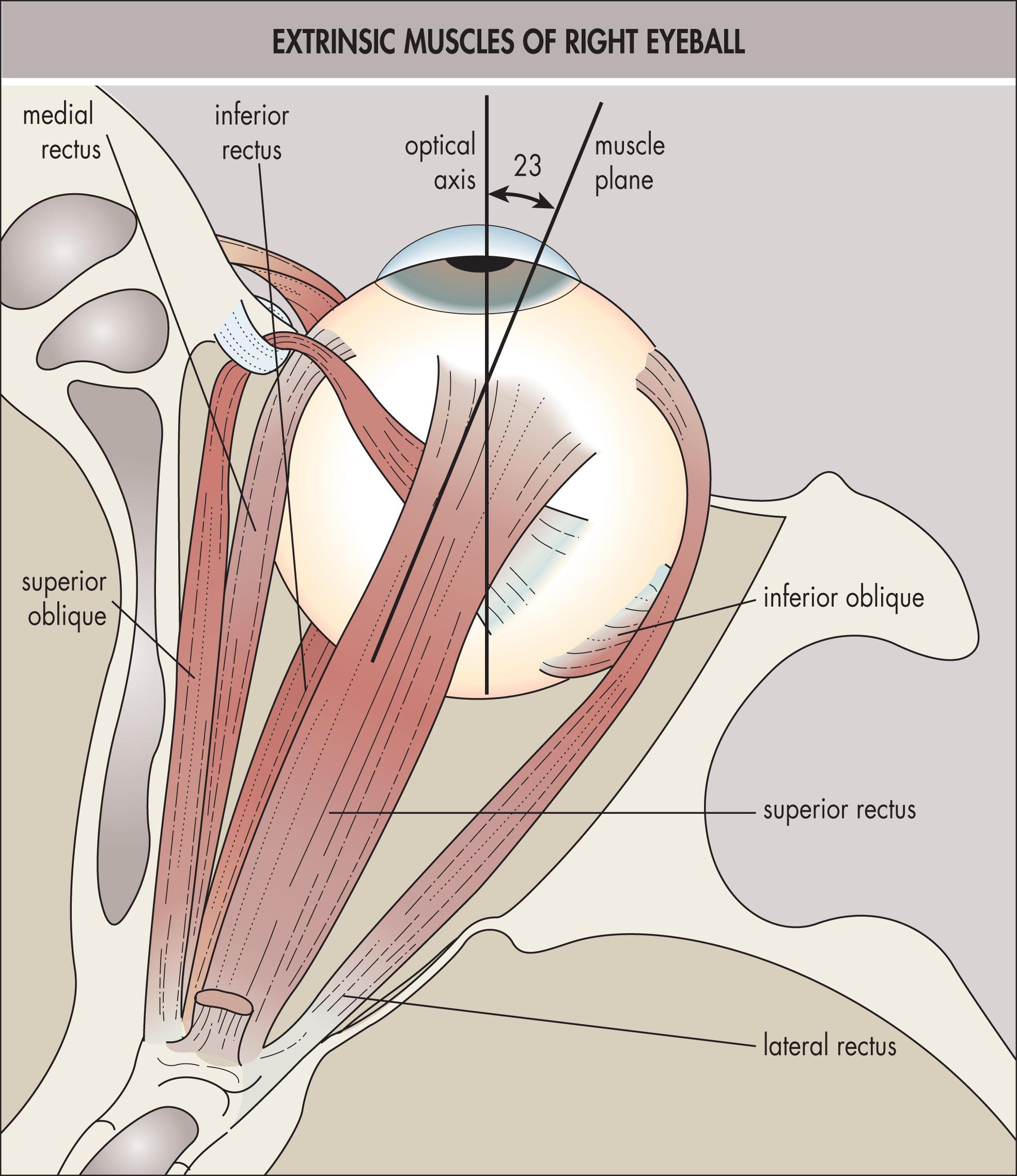Physical Address
304 North Cardinal St.
Dorchester Center, MA 02124
Muscles and associated tissues that provide eye movements and allow for binocular vision.
Unique muscle type with specialized structure, metabolism, and innervation.
Connective tissue gimbal supporting the eyeball and regulating its rotational properties.
The development of extraocular muscles, which are of mesodermal origin, begins at 3–4 weeks’ gestation. Early in gestation, neural crest cells divide and encircle the mesodermal cells destined to become primary myoblasts of individual extraocular muscles, guiding them to their appropriate positions and forming their connective tissue pulleys. Later, after the myoblasts develop through the primary and secondary stages, cranial nerves migrate to them from the brain and form neuromuscular junctions. The extraocular muscles and their surrounding tissues are present and in their final anatomic positions by 6 months' gestation, but they mature later, even after birth.
Extraocular muscles and their terminal tendons are composed of long, generally parallel fibers that transmit tension from end to end with little mechanical interaction between adjacent fibers. Each motor nerve axon in an extraocular muscle innervates only one or a few muscle fibers, permitting extremely precise neural control of individual fibers according to their specific insertions on the sclera.
The orbits are oriented approximately 23° temporal to the midsagittal plane ( Fig. 11.1.1 ).

All extraocular muscles except the inferior oblique originate at the orbital apex. The superior, inferior, medial, and lateral rectus muscles arise from a fibrous ring called the annulus of Zinn , and the optic nerve, the superior and inferior divisions of the oculomotor nerve, the abducens and nasociliary nerves, and the ophthalmic artery pass through it ( Fig. 11.1.2 ). The superior oblique muscle arises from the orbital wall superonasal to the annulus of Zinn. The inferior oblique muscle originates from the maxillary bone in the orbital floor, adjacent to the lacrimal fossa and posterior to the orbital rim.

Become a Clinical Tree membership for Full access and enjoy Unlimited articles
If you are a member. Log in here